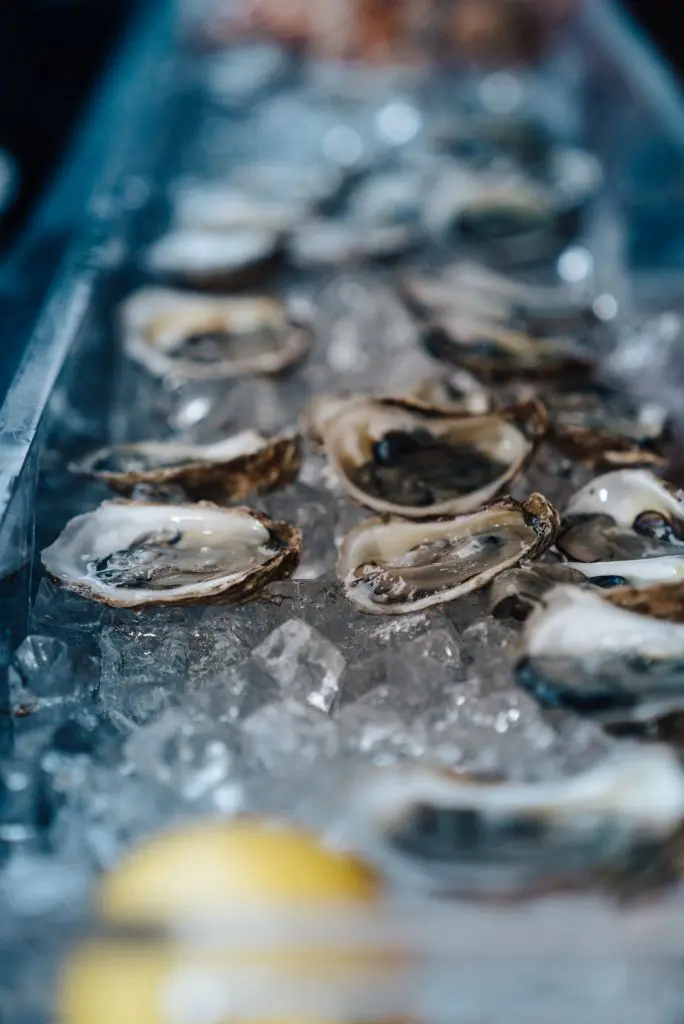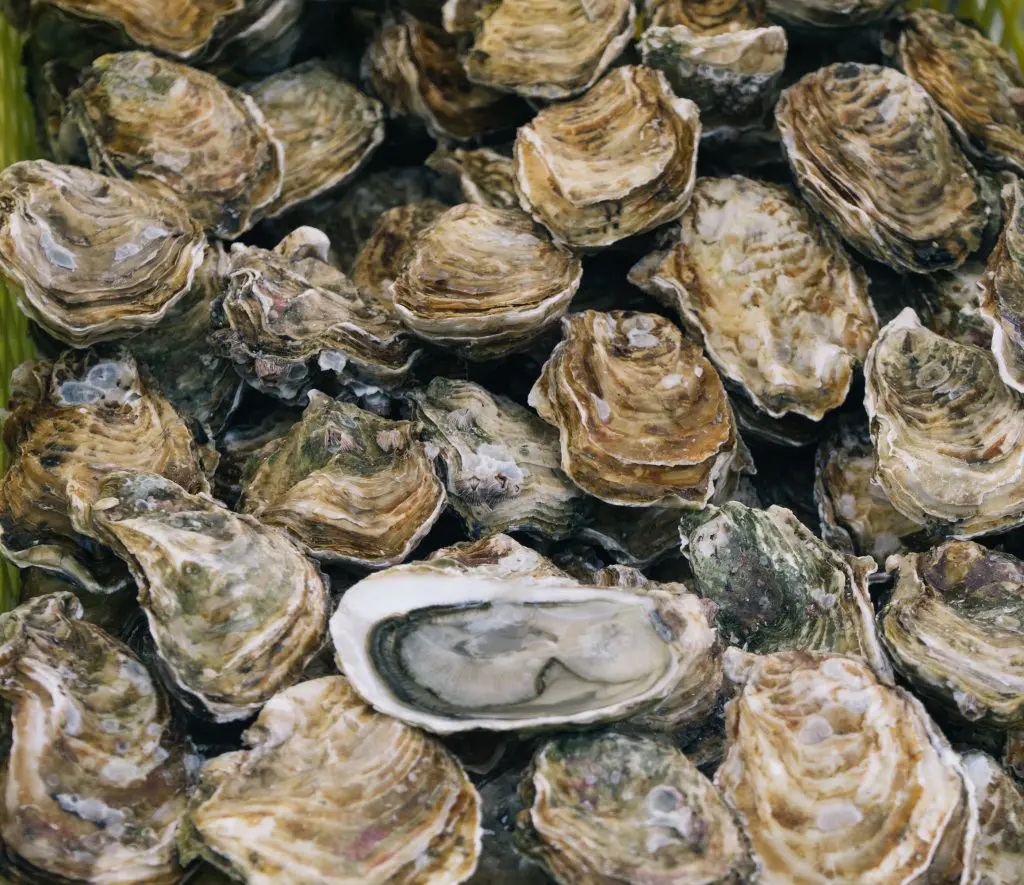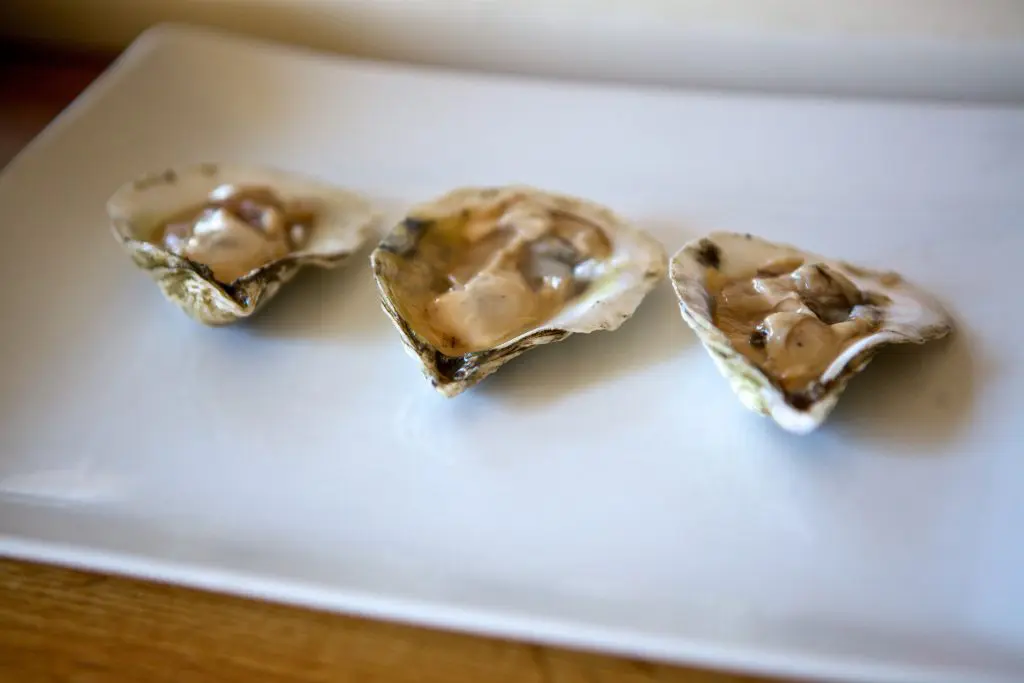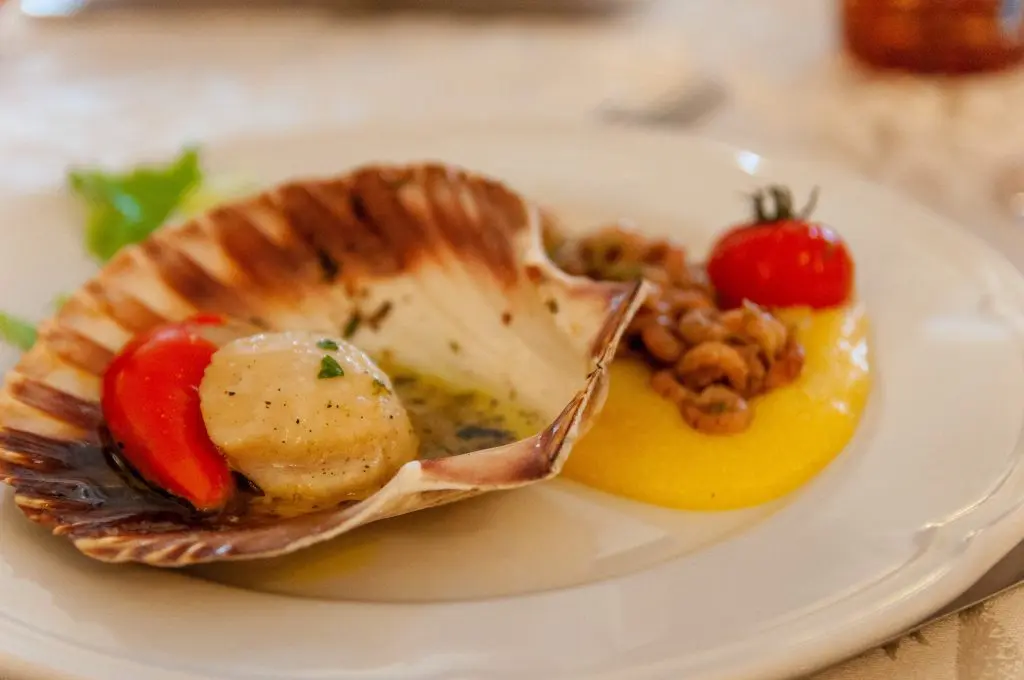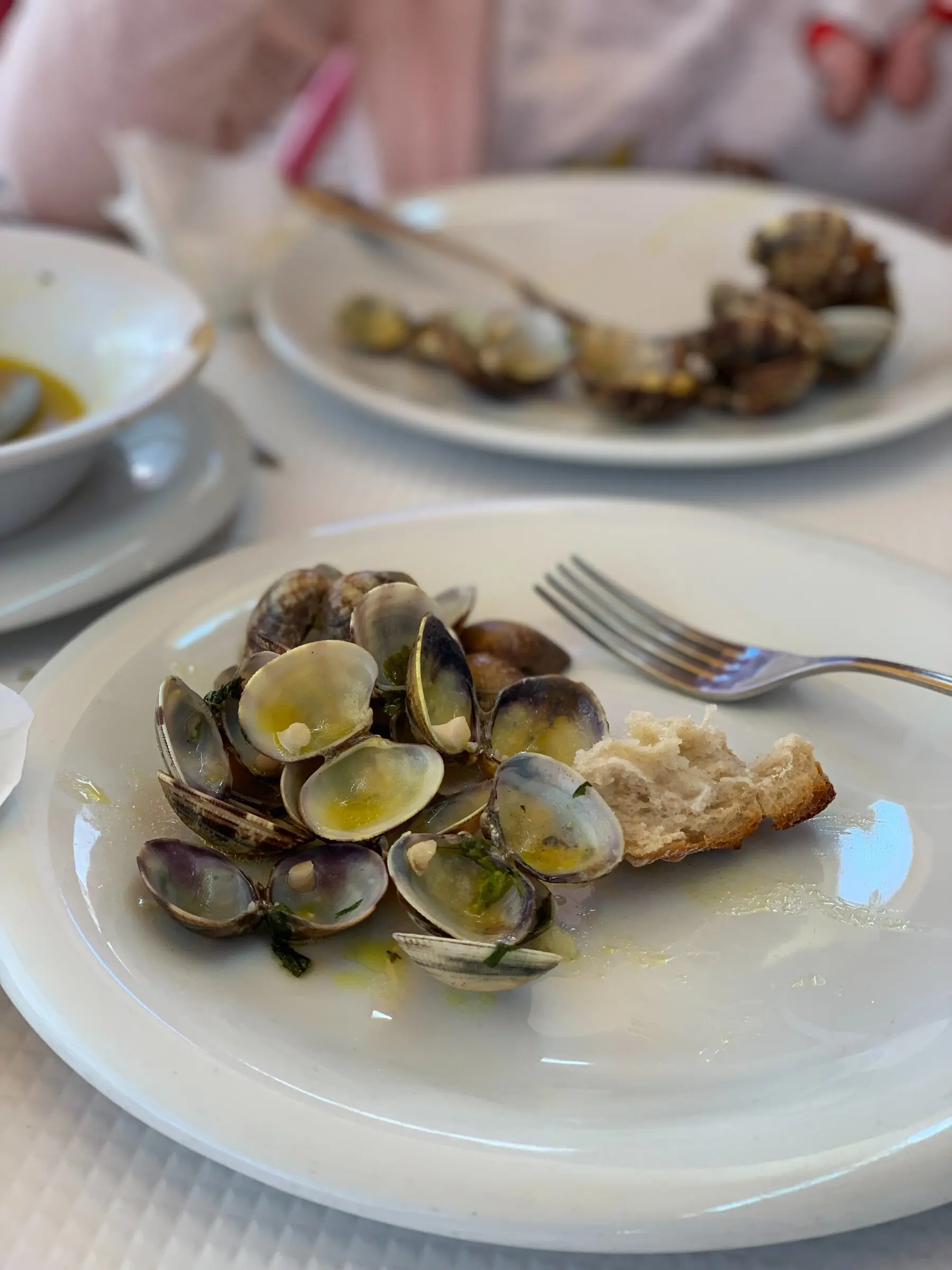Croatia is a small country that packs a big gastronomical punch. With nearly 3,500 miles of coastline on the Adriatic Sea, it’s no surprise that Croatia produces some of the most delectable seafood in all of Europe. While inland cuisine features more typical Slavic foods – think cabbage, pork, and potatoes – coastal cuisine is heavily influenced by the sea and has a more Mediterranean flair. Two of the most popular and tasty seafood delicacies that Croatia is famous for are oysters and mussels. However, there are plenty of other shellfish species deliciously inhabiting the Adriatic Sea.
Jump to a section of this article
Oysters
We start our list with the best – the Mediterranean oyster. The humble oyster, or kamenica, has been famous in the Balkans for more than two millennia. There are numerous legends about Roman emperors and their passion for oysters from Ston’s Bay, situated in the south of Croatia. In later centuries, during the period of the Dubrovnik Republic, oyster cultivation became more sophisticated, and oyster farmers were given special privileges from the Republic authorities. In 1936, the Ston Bay oyster was given special recognition from the General Trades International Exhibition in London, when the Grand Prix and Gold Medal Award were both awarded, due to the high-quality of Ston’s oysters.
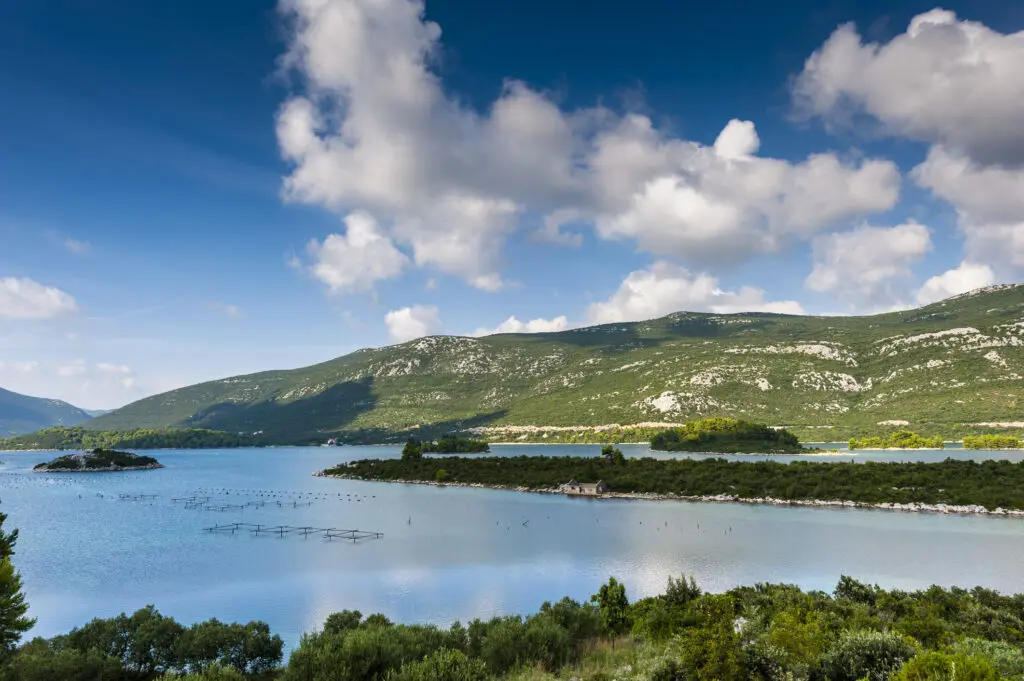
How are oysters farmed?
There are four main factors when it comes to producing top quality oysters: fresh and clean seawater, low salinity (usually acquired from being close to underground river channels, mixing freshwater with saltwater), alternating water flow, and protection from strong and direct winds. Unsurprisingly, Croatia has many areas of its shoreline that hit all of these nails on the head, which is why they produce such high-quality and delicious oysters. The traditional process of farming oysters in Croatia hasn’t changed much from the times the Romans started doing it. An oyster net is thrown into the bay, where it will hang out for about a year or so as the oysters grow. You’ll likely see some white blocks floating around in the bays while in Croatia – those are probably oyster nets! Farmers will check their nets after a year, harvest the mature oysters, and throw the immature oysters back in the Adriatic to fatten up for the next harvesting season. Through all this, it takes about 2-3 years from birth to the time you have the fresh oyster sitting on your plate.
How are oysters eaten?
Although many people love them and slurp them down with pride, there are others that get freaked out when they see a slimy oyster inside of its rocky shell, waiting to be swallowed whole. Traditionally eaten raw with a squeeze of fresh lemon juice, oysters can also be fried or baked. No matter how they are eaten, the buttery texture and salty flavor are sure to remind you that you are eating something that came fresh from the sea!
Where, and when, to try oysters in Croatia
No matter when you are visiting Croatia, you’ll always have the chance to try some fresh oysters if you plan to mingle along the Adriatic coast. The tradition goes that you should only eat oysters in months with an R in their name. The theoretical reasons for that don’t apply in Croatia however, where they’re always perfectly fresh. That being said, the best time of the year to enjoy oysters is in March, when the oysters are the largest and have the best flavor. There is even a special oyster feast to commemorate St. Joseph that happens every year at the end of March. During this festival, locals and non-locals alike come together to enjoy fresh oysters in Mali and Veliki Ston. A visit to a Ston oyster farm, either as part of a day trip a delicious stop on a transfer from Dubrovnik to Korcula, is one of our most popular activities.
Apart from southern Croatia, oysters are also farmed in central Dalmatia – around Šibenik and Trogir, and around the Istrian peninsula in the north, at Lim Channel. You can try them raw, straight from the sea at one of the local oyster farms, or you can order one of the various oyster dishes offered in local restaurants. Paired with a glass of white wine, you can’t go wrong!
Mussels
The second favorite shellfish in Croatia are mussels. Even though mussel production was probably present in earlier centuries, the first known intentional mussel farming in Croatia took place at the beginning of the 20th century.
How are mussels farmed?
As with oysters, the same four main factors contribute to high-quality mussel production: fresh and clean seawater, low salinity, alternating water flow, and protection from strong and direct winds. Because mussel production is much less delicate (although very similar to oyster production), mussels aren’t as prized as oysters are. Still, it is hard to find any local in Croatia that dislikes them. They take up to a year and a half to fully mature.

Mussels with buzara sauce 
How are mussels eaten?
While with oysters you typically only try a few at once, mussels are considered a full dish. The average portion for a person is usually about one pound (though that includes the shells). There are numerous recipes to prepare mussels in Croatia, including mussels alla buzara (in a white or red wine sauce), baked mussels, mussel risotto, and seafood soup. They can be eaten raw, cooked, or even fried.
When and where to eat mussels in Croatia
Although they are available all year round, the best time to eat mussels is from June through October. In this period they are the juiciest and most meaty. Today, mussel production is widespread along the Adriatic coast. You can find mussel farms in nearly all regions of coastal Croatia. This also means that you can find mussels in many restaurants along the coast.
Scallops
Scallops or as Croatians call them, Jakobove kapice, are not unique to the Adriatic Sea, but they surely stand out because of their excellent quality. These fan-shaped shells were named after and are a symbol of St. James, one of the twelve apostles, the protector of seafarers.
Where and how do scallops grow?
Again, the mixing of fresh and seawater plays an important role and makes the perfect place for this shellfish to thrive. These areas are rich in plankton, which shells feed on. Scallops are common in the waters around the town of Novigrad, in west Istria, where the river Mirna flows into the Adriatic. Istrians call them kapešante, from the Italian, capesante. Unlike oysters and mussels, scallops are not attached to any surface. The shell opens and closes with the help of a strong muscle and this makes a great swimming mechanism. They are not farmed and are difficult to find. If you do find them in this game of hide-and-seek, it is usually at greater depths, hiding in sand and mud.
How are scallops eaten?
The tender and juicy scallop muscles are usually never eaten raw in Croatia. However, they do not require complex cooking procedures. Locals serve them grilled with olive oil or cooked alla buzara with laurel leaves. They are also delicious when covered with cheese and baked in an oven. No matter how one serves them, scallops always have that “wow” factor.
Where and when to try scallops in Croatia
In the town of Novigrad, there is a gourmet festival dedicated to the scallop that takes place every year in June. Organizers serve an abundance of scallops and other seafood, with the help of local restaurants. Throughout the year, you can find scallops in Istrian restaurants and taverns.
Noah’s Arks
Once the most widespread Adriatic shell, Noah’s Ark or kunjka, might soon disappear entirely from local menus. In the last few years, it has become very difficult to find, even in areas that once abounded with the shell. Scientists are still trying to figure out what is causing kunjka to vanish. There have been instances in the last few decades when Noah’s Ark seemed to have become extinct but reappeared later. Let’s hope this is the case and we will soon get to enjoy it again on our plates.
Where are Noah’s Arks found?
Kunjka lives in shallow waters, attached to rocks, several shells in clusters. They prefer locations protected from strong winds but with stronger currents. You need a special tool to harvest kunjke, they will not give up easily!
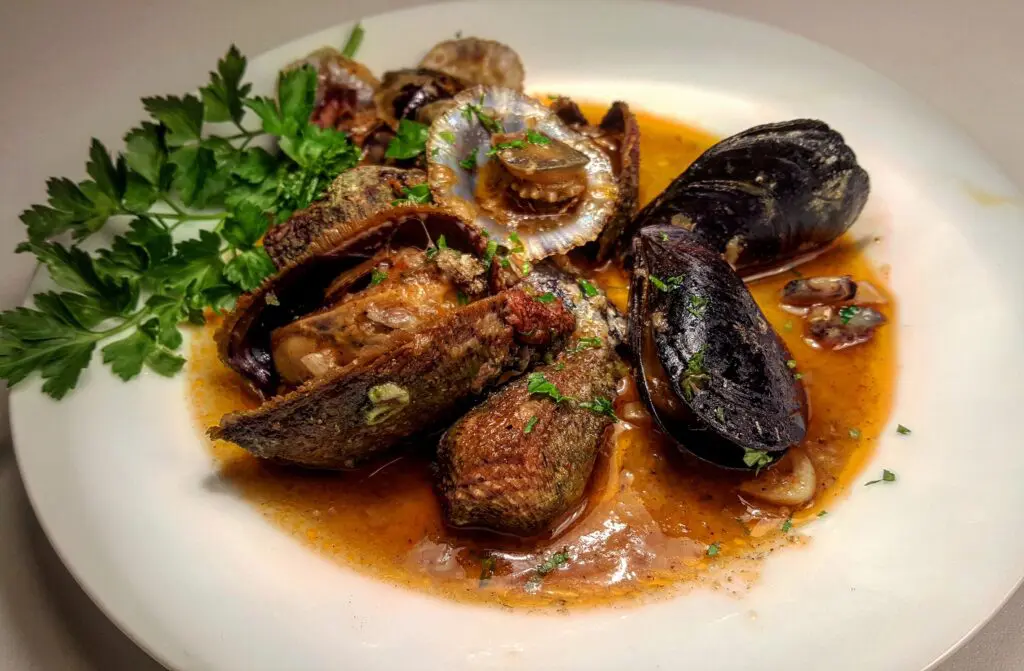
How are Noah’s Arks eaten?
The shells have a somewhat chewy texture but are very flavorsome. You can eat them raw, however, locals prefer making them on gradele, a simple grill grating. They also work well in buzara sauce or mixed with other shells and pasta.
Where can I find Noah’s Arks on menus?
Colonies of Noah’s Ark around Zadar and Biograd have fed generations! The Pašman Channel, between the island of Pašman and the coastal area between Zadar and Biograd, used to be packed with them. They also thrived along the Istrian coast around Umag and Novigrad. Although these seem to be unfavorable times for kunjke, we hope to see them come back to the Adriatic.
Warty Venus Clams
We must admit, the name does not sound appealing but bear with us. Warty Venus, brbavica in Croatian, was named after the Roman goddess of love. According to a Roman myth, Venus was born of sea foam, rising from the sea in a clam. The body of the clam is ribbed, sort of warty, and hence the first part of the name. However, warty Venus is also worldwide known as sea truffle. Now that doesn’t sound too bad, does it?
Where are Warty Venus Clams found?
Brbavica lives in colonies buried in the sand. Hence the truffle analogy. Sometimes you can find them under gravel or even some larger rocks, but they prefer sandy and muddy sea bottoms. They inhabit areas with weaker sea currents because a strong current disturbs sand and leaves them exposed. To find them and at the same time not hurt their environment, one needs to poke the sand with a small metal rod or a screwdriver. Brbavica blows out water when threatened and digs deeper into the sand, creating a sort of sand geyser. And that is how you know where to dig. It takes two years for them to fully mature and they usually grow up to 1.5 inches.
The clams can be eaten raw, sprinkled with lemon juice, just like oysters. Making buzara sauce is always an option or combining them with pasta or rice.
Where can I find Warty Venus Clams on a menu?
Brbavica is an exceptional delicacy and one of the most expensive shells you can order in restaurants. They can be found across the Adriatic and caught at any time of the year. However, the delicate harvesting procedure increases their price, making them the second most expensive shell in Croatia, after the scallop.
The Date Mussel – Strictly Forbidden To Harvest
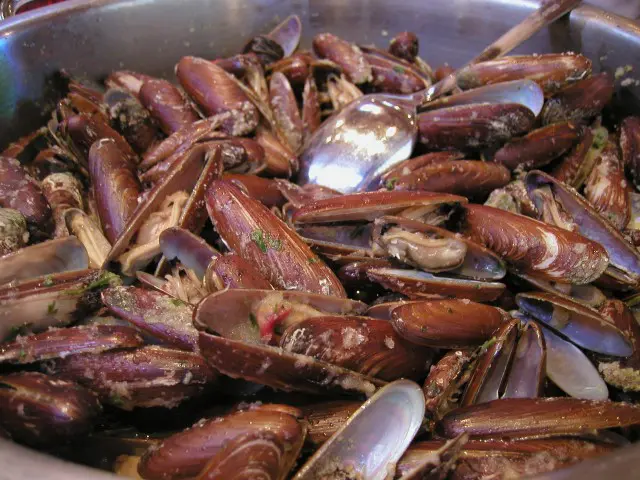
We’ve left this for last as it’s something you should decline if offered. Please note that some species are strictly prohibited to take from the sea! The most well-known protected species is the date mussel (prstac). These shells live in drilled holes in the rocky seashore. Due to their extremely delectable meat, they have been excessively harvested for many years, almost to the point of extinction. It not only takes around 60 years for date mussels to grow to their full size, but in order to harvest them, you need to break the rock where they are living – essentially destroying the shore along the way. Therefore, date mussels are protected in Croatia, and harvesting and trading them is prohibited. Unfortunately, because they are so yummy, there is an underground market for them and illegal trade is pretty common. Some well-connected tourists might even see them pop up on a restaurant menu or two. If you are ever offered date mussels – please say no! In the end, there are so many other delicious and legal options out there.

Josipa comes to us with a strong background in the tourism business in Dubrovnik. With us, she returned to one of her favorite roles, direct contact with guests, after several years in sales roles with one of Dubrovnik’s larger high-end hotels. Although Josipa was not born in Dubrovnik, she finished her studies and started her family life here and she feels Dubrovnik to be her hometown. She knows the best places in the city and the surrounding countryside, which she loves visiting with her family. If you’re starting your trip in Dubrovnik, Josipa will greet you upon arrival and will be your local contact, via the cellphone we provide, throughout your trip.
